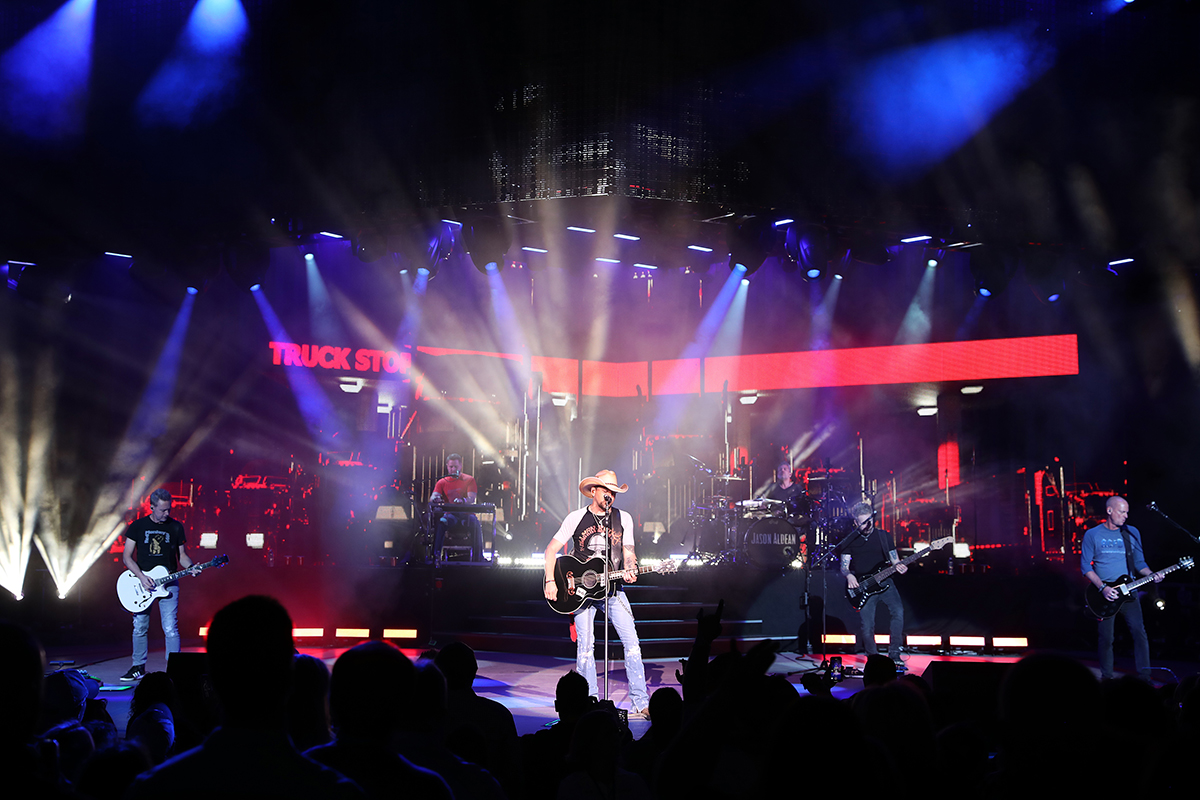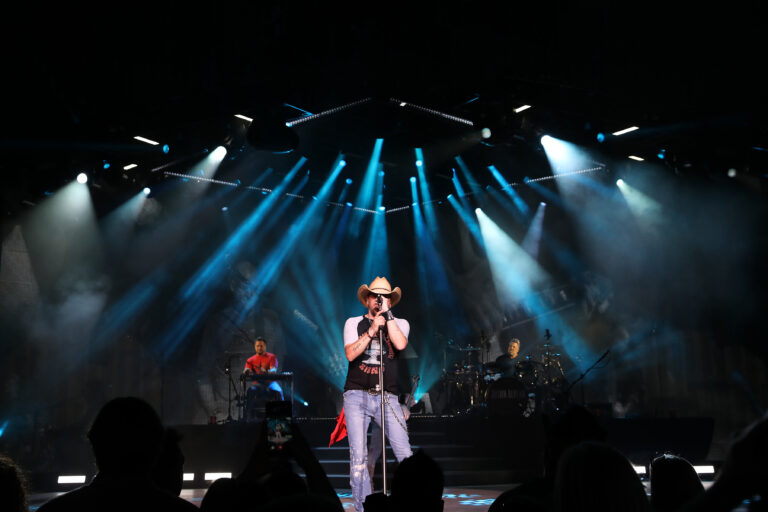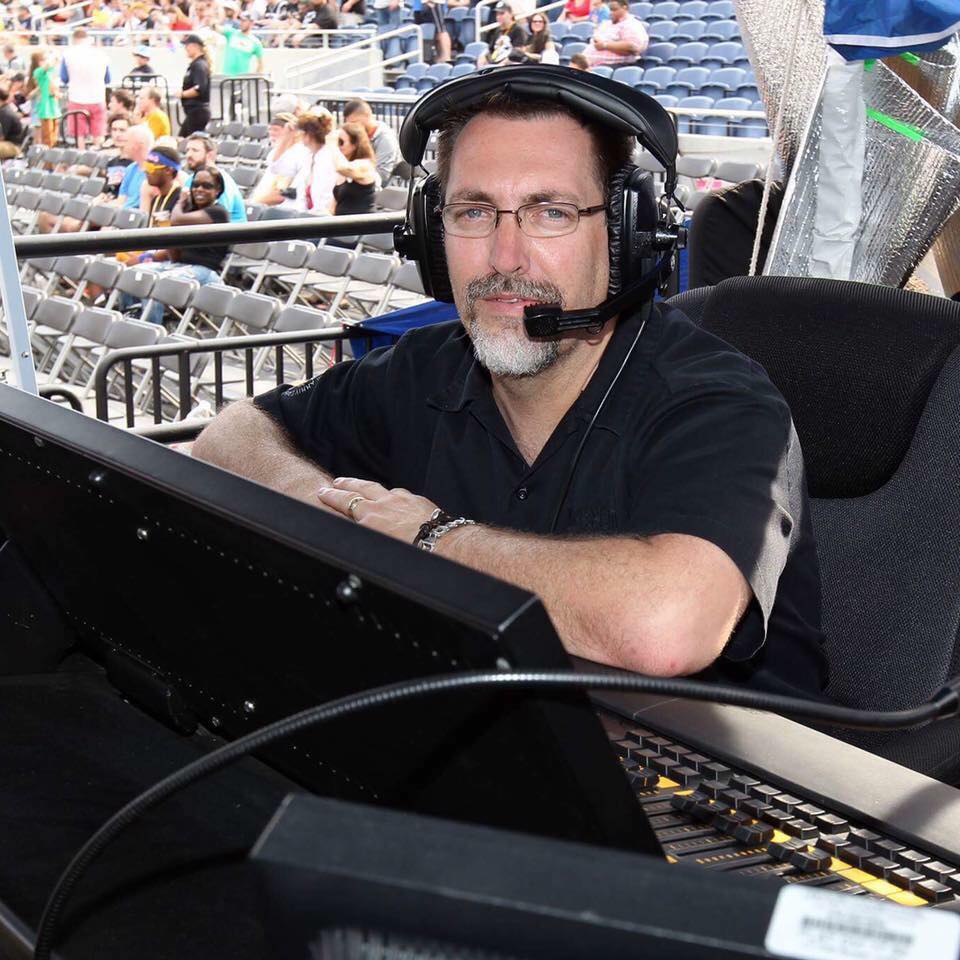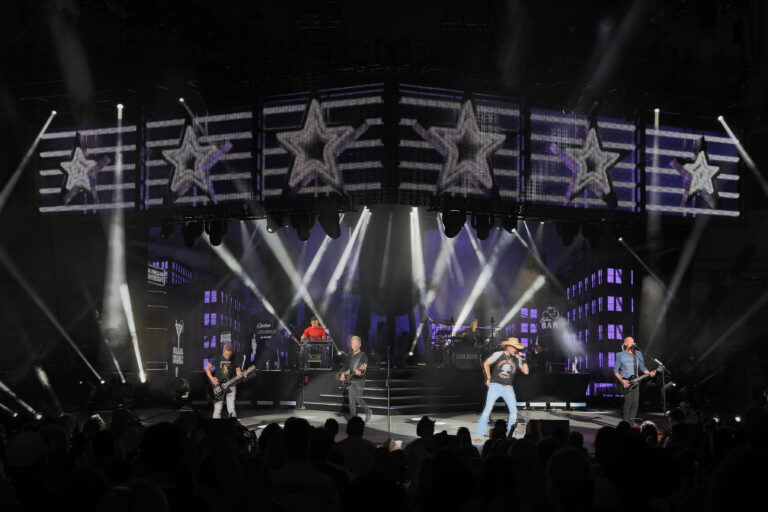Keith Hoagland’s Light Bridge
Posted on August 1, 2019
Photo: Todd Kaplan | Lighting Design: Nick Whitehouse and Dom Smith Fireplay | Lighting Director: Keith Hoagland
Every lightshow is the result of an incredible (some might even say improbable) journey. Starting perhaps on a long walk through the woods as a slight vibration in the deepest recesses of a designer’s mind, then being captured somehow in a software rendering, before finally blossoming into its full glory as a panorama that transfixes audiences on tours.
Of course, there is a large and sometimes treacherous gap between the design concept and the brilliant visuals that fill arenas with movement and color. It is into this mysterious chasm that lighting directors step in to serve as a bridge between concept and creation.
Among the most experienced doing this is Keith Hoagland, who aside from his own work as a designer for the likes of Rob Thomas, has also served as a lighting director on tours by a long list of stars from Jason Aldean and Blake Shelton to Usher and the Jonas Brothers. The owner of CKP Lighting in Nashville, Hoagland talked to us about the dynamics of a successful designer-director collaboration.
Why do some designers and directors seem so comfortable with each other? What makes for a successful collaborative team?
“From my side of things, when I see a collective team that works, it is because each member is confident within themselves, and because they also respect and value every one of their team members. With value, comes respect. With respect, comes confidence. With confidence, you have a collective that is strong. You have strength in numbers — numbers that are cohesive and solid.”
Do you ever get out on a tour and find that the designer’s show as originally laid out just isn’t working?
“It can happen, if not during rehearsals, then within the first weekend. By then you’re going to know if things are going to work for you or not.”

Photo: Todd Kaplan | Lighting Design: Nick Whitehouse and Dom Smith Fireplay | Lighting Director: Keith Hoagland
What do you do in those cases?
“If things are not working out, you gather the powers to be – management, production management, and design folks, so you can come up with a collective idea on how to make the necessary changes and move forward. If design team is done, or has moved on, you gather the tour departments and figure out what is best for the artist and go forward. In the last scenario, you would pull from your experiences in touring. If you’re a young touring team, then you reach out to your mentors and gather wisdom that way.”
When you start with a new designer who you’ve never worked with before, how do you get an understanding of what that designer is all about creatively?
“I try to look those designers up. I do my research on the people I am about to work with. What have they done in the past? I try to see if I can find a signature trait or vision that shows itself across all their work. Then, I try to connect. Sometimes, this takes place in an instant. At other times I have to work at it longer.”
Tour lighting has gotten more complex with more programming and video involved. Has this changed the nature of the designer-director relationship?
“Not really. It still all goes back to communication. If the tour is going to have the LD drive it all from one device, then there has to be communication and vision shared. It’s never simple when a tour hits the road. Even if you’re just handed a show file and told, ‘it is all done,’ and all you have to do is update position, there will be times when your show is not able to load in and what not. There are also times when you have to make a decision about whether or not to punt. Again, communication with the designer, and having access to reach out to when issues arise are key.”
You mentioned punting. When you punt, do you try to keep the designer’s overall vision in mind, or is it just something that you do more in the moment responding to the music?
“I try to keep the same vision throughout the entire tour for the original design. When I punt, or clone and update a show file to fit a venue, I never lose sight of the designer’s original intent. Keeping it consistent is key for me. This way the artist and band know what to expect from the lightshow.”

Photo: Todd Kaplan
Aside from looking at a designer’s light plot, when you’re a lighting director how do you get a sense of what his or her vision is for the show?
“Communication. If you do not have a good, direct line of communication to the designer, then you will never grasp or understand their vision. This also goes for the designer as well. If they do not, or are not, willing to have that communication, then you will just have chaos and frustrations along the way. I cannot stress the importance of having a good line of communication from the design team to the actual lighting directors who will be executing and fulfilling the design as it goes forward on a tour or event.”
On the subject of communication, we know designers all have their own styles when it comes to creating lightshows, but do they also have their own unique ways of communicating with their lighting director?
“All of us, not just designers, have different ways of explaining or creating a vision. It’s your job as a lighting director to try to ask questions and speak up if you do not understand or are confused. If nothing is said, then chaos will form. None of us are mind readers. It takes sometimes a lot of courage or inner strength to swallow your pride and ask for help or an explanation of what is being done. We all can grow and learn from each other. Sometimes, you have a personality conflict. That is normal, but it takes maturity to see that and go past that place and work together for the better of the show. If not, maybe it is time for you to take a step back and bow out of that project. Not everyone is a good fit. It is the folks who can work through these hurdles that succeed.”
You’ve done quite a bit of designing yourself. Has your experience as a director made you a better lighting designer? Has your experience as a designer made you a better lighting director?
“I think it has helped in both sides of positions. Being a long-time lighting director, helps me in design because I know what is required of an LD. And I try to design where the LD has the tools he needs to do that job. When I get to work with designers who have been or have a great understanding of an LD, then you can push the limits more and use the tools given to you.”

Photo: Todd Kaplan | Lighting Design: Nick Whitehouse and Dom Smith Fireplay | Lighting Director: Keith Hoagland
What’s the number one thing lighting designers can learn from lighting directors?
“For me, if designers would take in consideration or at least look into the venues that your creation will be going, not dumb down, but be mindful of venue limitations. Then those designs will have a lot more success of being carried out. I’m not saying do not be creative or make it easier for us to get in or out of the venue. I am saying create a design that will be used wisely and fit all of your gear within the venues and not have wasted clients’ money having gear sitting in the trailers because 75-80% of the venues cannot even hold the design. That is wasteful.”
What’s the best thing about your job?
“I love what I do. I enjoy being stretched and learning new things. But sometimes using fancy plugins or macros or large keystroke syntax paths are not the way. Old fashion transition and musicality and timing skill is what is needed. Both ways have a place, not one is better than the other. The pride of ‘I wrote a 300-line macro that does any or everything for me’ is great, but in the end, it is, did you do what the client or artist has asked? In the final analysis, this is all that matters.”